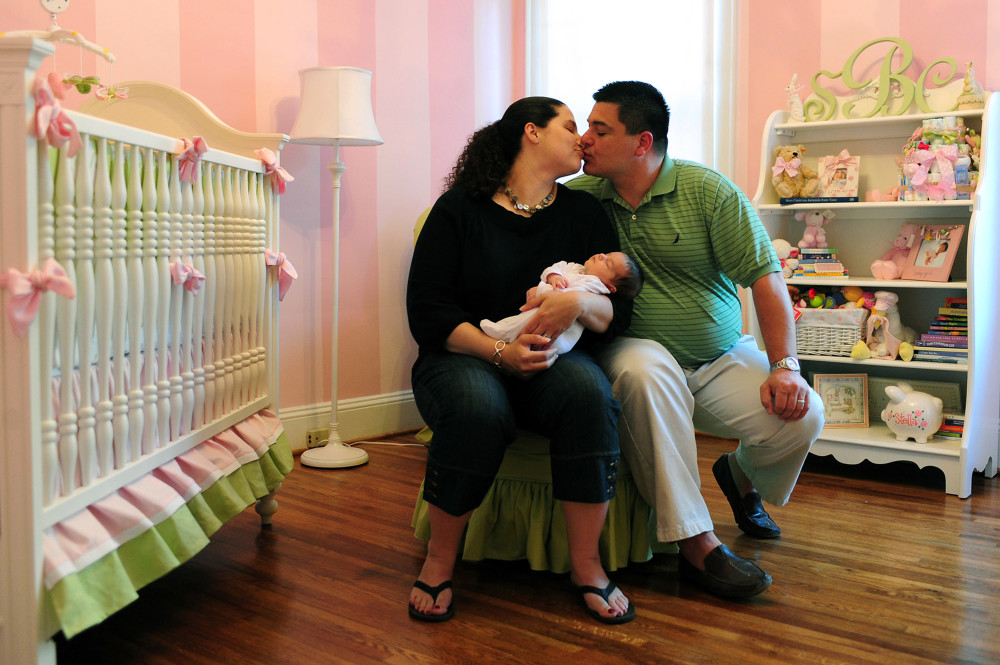By Stephanie Lee
San Francisco Chronicle.
A woman struggling to conceive children through in vitro fertilization can now turn to a growing number of Bay Area startups with sophisticated technologies designed to make the frustrating process cheaper and more successful.
In vitro fertilization, or IVF, consists of fertilizing eggs with sperm in a laboratory and embedding the most promising embryos in the womb.
But the difficulty of accurately predicting which embryo will succeed often drives women to pay for multiple IVF rounds and to carry twins or triplets at a risk to their health.
One new and noninvasive diagnostic test based on Stanford University research is being touted for its ability to spot a successful embryo early in development.
Auxogyn, the Menlo Park company behind the test, recently announced a deal that gives the pharmaceutical giant Merck exclusive rights to commercialize the test in Europe and Canada, where it is already available on a limited basis.
Recent advancements in IVF diagnostic tests “will probably allow for a significant increase in pregnancy rate due to the fact that the best embryos will be picked,” said Dr. Shahin Ghadir, a fertility specialist at the Southern California Reproductive Center who is not involved with Auxogyn.
The global market for infertility drugs and devices will hit $4.8 billion in 2017 compared with $3.6 billion in 2010, according to Transparency Market Research.
Age can be a factor in pregnancy complications and a reason to seek out IVF, and aspiring mothers tend to be a little older these days.
Data from the National Center for Health Statistics show that women in their 40s are more likely to have babies now than at any time in more than four decades.
IVF isn’t ideal in terms of efficacy or cost. About 41 percent of IVF cycles with fresh embryos result in live births for women under 35, a rate that significantly drops off in later age, according to the Society for Assisted Reproductive Technologies.
Some women try to boost their chances by implanting two or three embryos, even though that risky practice has dwindled as technology has improved.
Multiple attempts add up fast. An IVF cycle in the U.S. costs on average $12,400, according to the American Society of Reproductive Medicine.
Auxogyn’s test, the Eeva Test, attempts to make the procedure more efficient by using time-lapse imaging and computer software to analyze developing embryos.
Specifically, embryologists and doctors can track which embryos’ cells are dividing on schedule — the strongest indicator of the ability to grow, the company says — as early as the embryos’ second day of growth.
“We want to continue to develop Eeva from a biological and technical standpoint to increase its sensitivity and specificity so we can help embryologists and physicians have more information when they’re making the decision about which embryos to transfer and how many to transfer,” said Lissa Goldenstein, Auxogyn’s president and chief executive officer.
In a trial with 54 patients and 758 embryos, embryologists who used Eeva plus traditional techniques correctly identified nonviable embryos 86 percent of the time versus 58 percent of the time without Eeva, the company said.
Auxogyn is also seeking approval for the test in the United States. The test costs about $1,330 in the United Kingdom.
Univfy in Los Altos, another startup based on Stanford University research, also offers women a way to evaluate their chances of pregnancy through IVF.
Consumers fill out online questionnaires and submit information from blood or semen tests, and the answers are compared with thousands of previous IVF cycles to give a personalized prediction of IVF success.
One test is for women considering IVF for the first time, while the other is for those who have already undergone the process.
The online tests, which cost between $50 and $175, can give women answers without making them go through the anxiety-inducing, expensive process of creating embryos, said Dr. Mylene Yao, a co-founder of Univfy and a former Stanford professor. Univfy is backed by angel investors.
“Knowing actual chances will really help, because many patients have much better chances than they presumed,” Yao said.














































































































































































































































































































































































